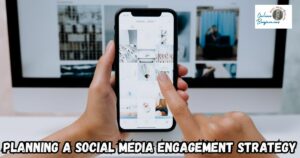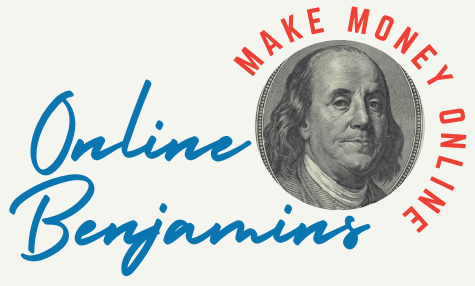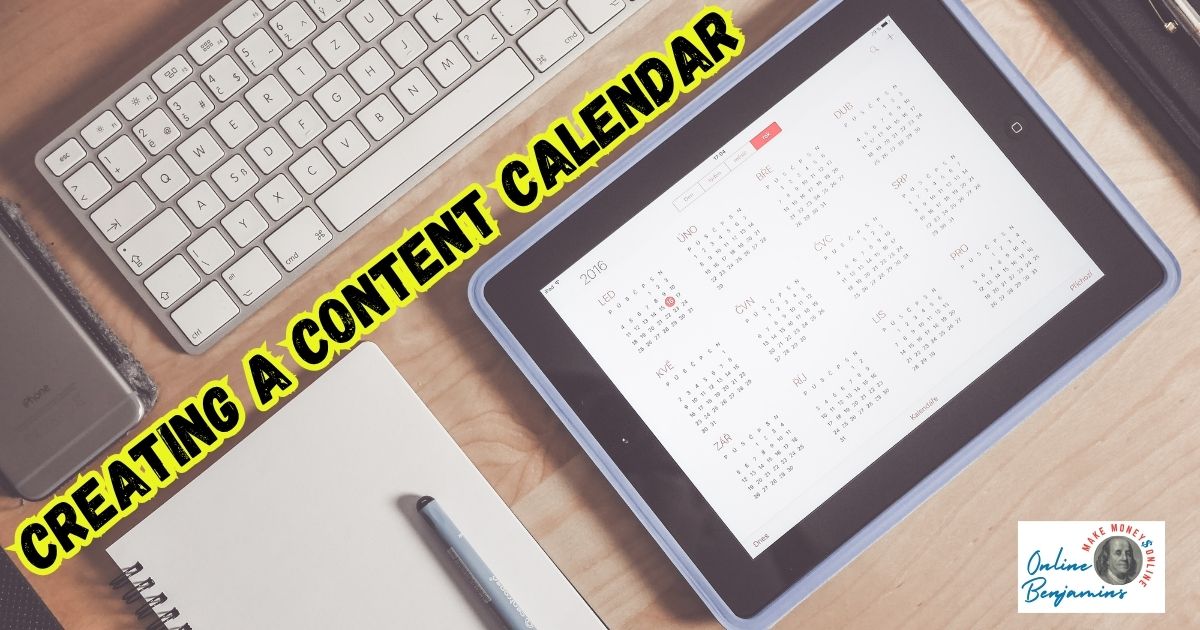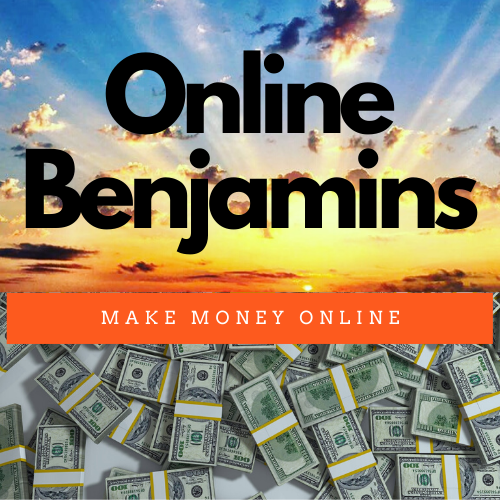Creating and managing a content calendar helps me stay organized and keep my marketing efforts on track. When I started using content calendars, I noticed I could plan ahead, improve consistency, and cut the stress of last-minute content creation.
QUICK LOOK: – Steps for Creating a Content Calendar
- Determine Your Goals: Before I jump into creating a content calendar, I need to know exactly what I want to achieve with my marketing. For example, maybe my goal is to drive more traffic to my website, increase engagement on social media, or generate qualified leads.
- Know Your Audience: For my content to work, I need to speak directly to the people I want to reach. This usually starts with creating a simple audience profile. I ask myself about their age range, job roles, interests, and what problems they’re trying to solve.
- Pick Your Platforms: Content can be published in lots of places: blogs, YouTube, Instagram, Facebook, LinkedIn, and email newsletters. I usually focus on one or two main channels based on where my audience spends most of their time.
- Brainstorm Content Ideas: I try to set aside time to jot down a long list of ideas. Some are blog topics, others become video tutorials, product announcements, or seasonal campaigns. I always keep my goals front and center to avoid filling the calendar with random posts.
- Choose a Content Calendar Tool: There are plenty of tools out there for content calendars. For solo work, a Google Sheet works great. For teams, I find Trello, Asana, or Notion have more features and make it easy to keep everyone on the same page.
- Make a Calendar Template: I built out a simple template to start. Even a basic table with columns for date, topic, and platform lets me map out everything at a glance.
- Fill in Your Calendar: I don’t try to fill every day at once. Instead, I schedule key dates, launches, holidays, or any big events. I leave some open slots for spontaneous, timely, or trending content that comes up unexpectedly for the best results.
- Draft Your Content: Once topics and dates are set, I get started drafting posts and making visuals. Working a week or two ahead is my favorite approach. Platforms and tools often have scheduling features that help me automate publishing.
- Share Your Calendar: If I’m teaming up with others, sharing the content calendar keeps everyone in sync. Team members can see the schedule, pitch new ideas, and update statuses. This has made a big difference in avoiding confusion, missed due dates, and repeated work
- Track Performance: After publishing, I check analytics to see what content is landing well. For blogs, I look at page views, reading time, and shares. On social, engagement metrics like likes, comments, and reposts give great clues about which topics hit home.
- Maintain Flexibility: Plans can always change. News events pop up, goals mix it up, or new trends pop out of nowhere. I look over my schedule every week and leave room for quick additions or pivots. This flexibility keeps my content fresh and relevant.
A content calendar is simply a tool—often a spreadsheet, app, or special calendar—that helps me schedule what content I’ll publish, where, and when. With some upfront planning, it gets much easier to hit deadlines and keep content lined up with my business goals.
This step-by-step guide walks through how I set up a content calendar, from figuring out goals to tracking what works best. I’ll add in practical tips I’ve learned, the process for choosing the right tools, and strategies to help keep things running smoothly. Let’s jumpstart the adventure of making content planning second nature.
Step 1: Clarify My Content Goals
Before I jump into creating a content calendar, I need to know exactly what I want to achieve with my marketing. For example, maybe my goal is to drive more traffic to my website, increase engagement on social media, or generate qualified leads.
I find it really important to set goals that are specific and measurable. When I know I want to publish three blog posts a month to boost search rankings or post daily on Instagram to build brand awareness, it feels much easier to shape my content plans.
Popular Content Goals
- Grow social media followers
- Boost website traffic
- Educate my audience (through tutorials or guides)
- Promote products or special offers
- Build an email subscriber list
Having clear goals helps me prioritize content ideas and pick the right topics without second-guessing myself.
Step 2: Know My Audience
For my content to work, I need to speak directly to the people I want to reach. This usually starts with creating a simple audience profile. I ask myself about their age range, job roles, interests, and what problems they’re trying to solve. For example, if I’m running a pet supply business, I look for dog and cat owners who want tips on animal health, training, and fun product recommendations.
Ways I Research My Audience
- Read comments and questions on my social media posts
- Send out a quick survey to my email list
- Look at Google Analytics or Instagram Insights to see what content people already like
Knowing my audience helps me brainstorm better content that’s more likely to get shared and enjoyed. I keep an eye out for shifts in their preferences, too, so my strategy stays fresh.
Step 3: Pick My Platforms
Content can be published in lots of places: blogs, YouTube, Instagram, Facebook, LinkedIn, and email newsletters. I usually focus on one or two main channels based on where my audience spends most of their time. For instance, if my readers are business professionals, LinkedIn and email could be the best. If I’m sharing recipes, Instagram and Pinterest might be ideal.
It is important to consider whether written or visual content is more effective in reaching my audience goals. It’s also key for me to be realistic about time and resources. I need to ask how much time I can give each week to creating and posting content. By zeroing in on fewer platforms, I keep my quality high and avoid spreading myself too thin, which makes producing eye-catching content possible.
Step 4: Brainstorm Content Ideas
This is where things get fun for me. I try to set aside time to jot down a long list of ideas. Some are blog topics, others become video tutorials, product announcements, or seasonal campaigns. I always keep my goals front and center to avoid filling the calendar with random posts that don’t move the needle.
Sources for Content Ideas
- Frequently asked questions from customers
- Current trends or industry news
- Popular posts from competitors
- Evergreen topics (content that’s always useful, like “How to Start a Blog”)
Mixing up content types keeps things interesting—for example, educational resources, behind-the-scenes stories, funny graphics, and reposts from my community.
Step 5: Choose a Content Calendar Tool
There are plenty of tools out there for content calendars. For solo work, a Google Sheet works great. For teams, I find Trello, Asana, or Notion have more features and make it easy to keep everyone on the same page. Many tools let me attach files, comment, and set deadline reminders. Finding a tool that feels intuitive means I’m much more likely to stick with it.
Basic Info I Include in My Calendar
- Content title or topic
- Platform (blog, Instagram, etc.)
- Post date and time
- Who’s responsible
- Current status (drafted, under review, published)
I always include what’s needed to prevent confusion and help everyone move smoothly through the process.
Step 6: Make a Calendar Template
I built out a simple template to start. Even a basic table with columns for date, topic, and platform lets me map out everything at a glance. For larger teams, I can add extra columns for tags, asset links, or notes about calls to action, which provides extra flexibility and ensures no details slip through the cracks.
What My Template Typically Looks Like
- Date
- Platform
- Content idea
- Responsible person
- Status
- Notes or links
This template is my roadmap. As I fill it in, I can quickly spot empty days, overlapping ideas, or too much of the same topic back-to-back.
Step 7: Fill In My Calendar
With my brainstormed list, I start slotting content into the calendar based on goals, themes, and what I know about my audience. I don’t try to fill every day at once. Instead, I schedule key dates, launches, holidays, or any big events. I leave some open slots for spontaneous, timely, or trending content that comes up unexpectedly for the best results.
Consistency is crucial, but it also pays to adjust according to feedback. If my audience connects more with videos on Fridays than Mondays, I’ll switch things up to match their habits for more interaction.
Step 8: Draft and Schedule Content
Once topics and dates are set, I get started drafting posts and making visuals. Working a week or two ahead is my favorite approach. Platforms and tools often have scheduling features that help me automate publishing.
For newsletters, I queue up campaigns in Mailchimp or similar tools. For Instagram, I use Buffer or Later. This way, content goes live even when I’m away or tied up with other projects, giving my routine a boost and letting creative thinking take center stage.
If I’m teaming up with others, sharing the content calendar keeps everyone in sync. Team members can see the schedule, pitch new ideas, and update statuses. This has made a big difference in avoiding confusion, missed due dates, and repeated work. I like to have regular check-ins or quick meetings so we can spot issues and spark new ideas. It lifts overall communication.
Step 10: Track Performance and Adjust
After publishing, I check analytics to see what content is landing well. For blogs, I look at page views, reading time, and shares. On social, engagement metrics like likes, comments, and reposts give great clues about which topics hit home. For email, opens and clicks tell me if newsletters are on point. I tweak future plans based on these numbers; if something works, I’ll double down, and if not, I’ll try a different approach.
Step 11: Keep My Calendar Flexible
Plans can always change. News events pop up, goals mix it up, or new trends pop out of nowhere. I look over my schedule every week and leave room for quick additions or pivots. This flexibility keeps my content fresh and relevant.
Why I Rely on a Content Calendar
Having a content calendar makes my workflow less chaotic and way more strategic. Glancing at the schedule, I can ensure every post and campaign supports my larger business goals. It helps make great work feel less stressful and more rewarding.
Benefits I’ve Seen
- Fewer missed deadlines
- More consistent posting
- No more scrambling for last-minute ideas
- Improved teamwork
- Clearer measurement of what’s working
By following these steps, I’ve discovered that content creation not only becomes smoother but also drives better results.
Quick Answers to Common Questions
How do I keep my content ideas fresh?
I gather ideas from customer questions, top competitor posts, and tools like AnswerThePublic or Google Trends. I regularly ask my audience what they’d like to see more of.
What if I miss a posting date?
It’s normal. I just move the content to the next available day or update it if it’s no longer relevant. Staying adaptable is important.
How much content should I plan ahead?
I aim for a month of ideas and schedule out the next two weeks. That rhythm keeps things flexible for trends or surprise chances.
Action Steps for Getting Started
- Pick a goal for my content calendar (like increasing engagement or launching a new product).
- Choose my main channels and brainstorm content ideas that fit my audience.
- Select a calendar tool and draft a template with all the key details.
- Schedule out my next two weeks and start working on drafts right away.
What’s one thing you want to achieve with your content calendar? I’d love to hear your plans in the comments or through a quick message! Ready to set your ideas in motion? Let’s get started today and make content planning work for you.
Check Out Our Most Recent Articles:
- The Role Of Advertisements In Monetizing Content

- Video Content: 6 Tips for Boosting Engagement On Social Platforms

- A 4 Phase Guide to Creating Platform-Specific Content

- Analyzing Social Media Metrics For Content Success

- The Impact Of AI On Content Personalization

- How To Build A Social Media Engagement Strategy in 7 Steps

Wishing You Much Success in Your Content Creation,

- onlinebenjamins.com
- thebeachangler.com
- thesinnerinthemirror.com
- Facebook: Online Benjamins
- Twitter: @onlinebenjamin1
- Instagram: dotcomdinero
- YouTube: Online Benjamins
Rex
P.S. If you have any questions or are unsure of anything, I am here, and I promise I will get back to you on all of your questions and comments. Just leave them below in the comment section. Follow me on Twitter: @onlinebenjamin1, Instagram: dotcomdinero, and Facebook: Online Benjamins.
Hi,
Thanks for stopping by and congratulations for taking the first steps to building your own online business. I’ve been in business both offline and online since 1997. I would consider it an honor to help you build your business. Father of 3, life long outdoorsman with an education in Genetics and Economics. This site is about cutting through the BS and finding the real opportunities in the online world. I look forward to working with you.



